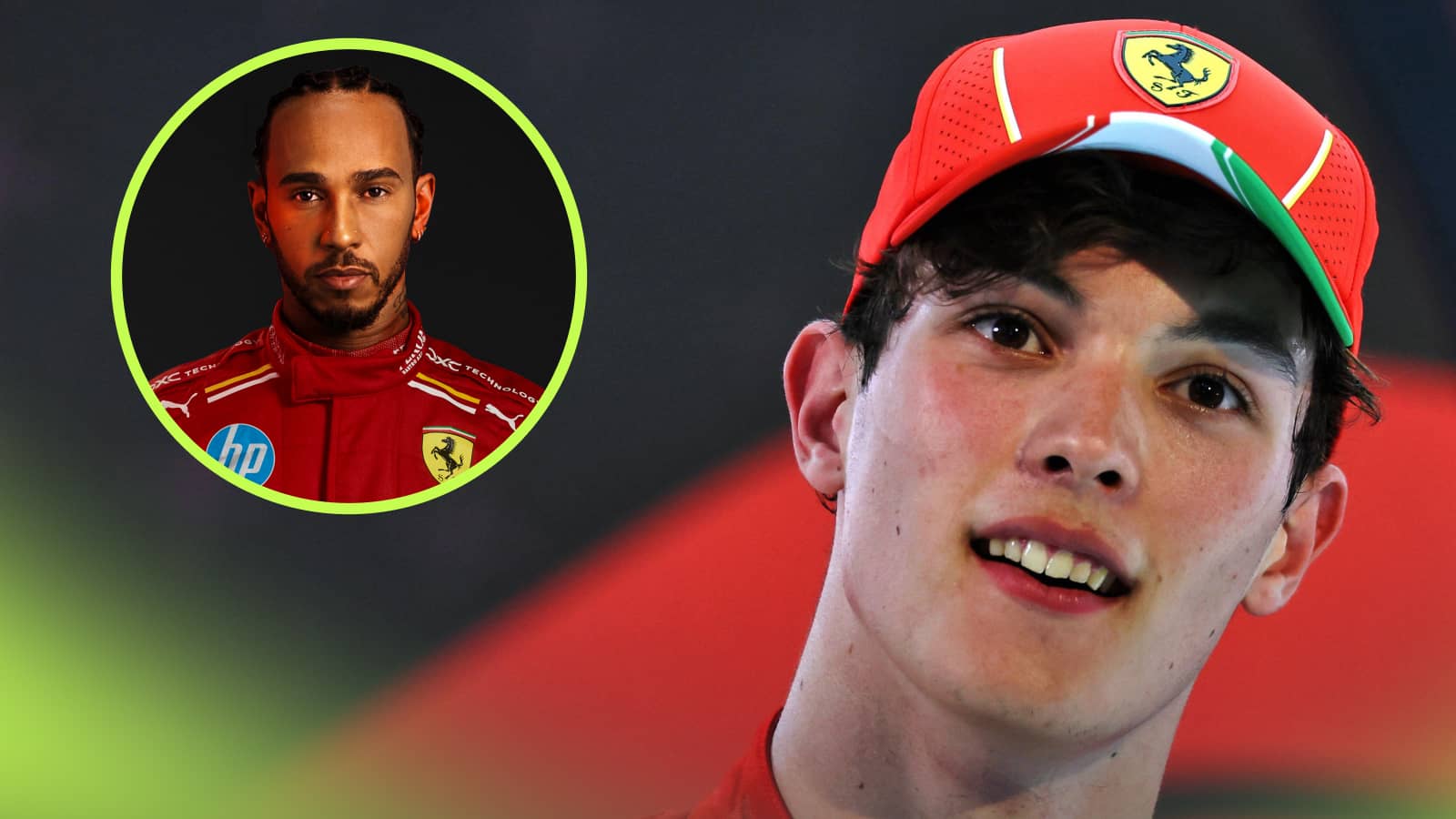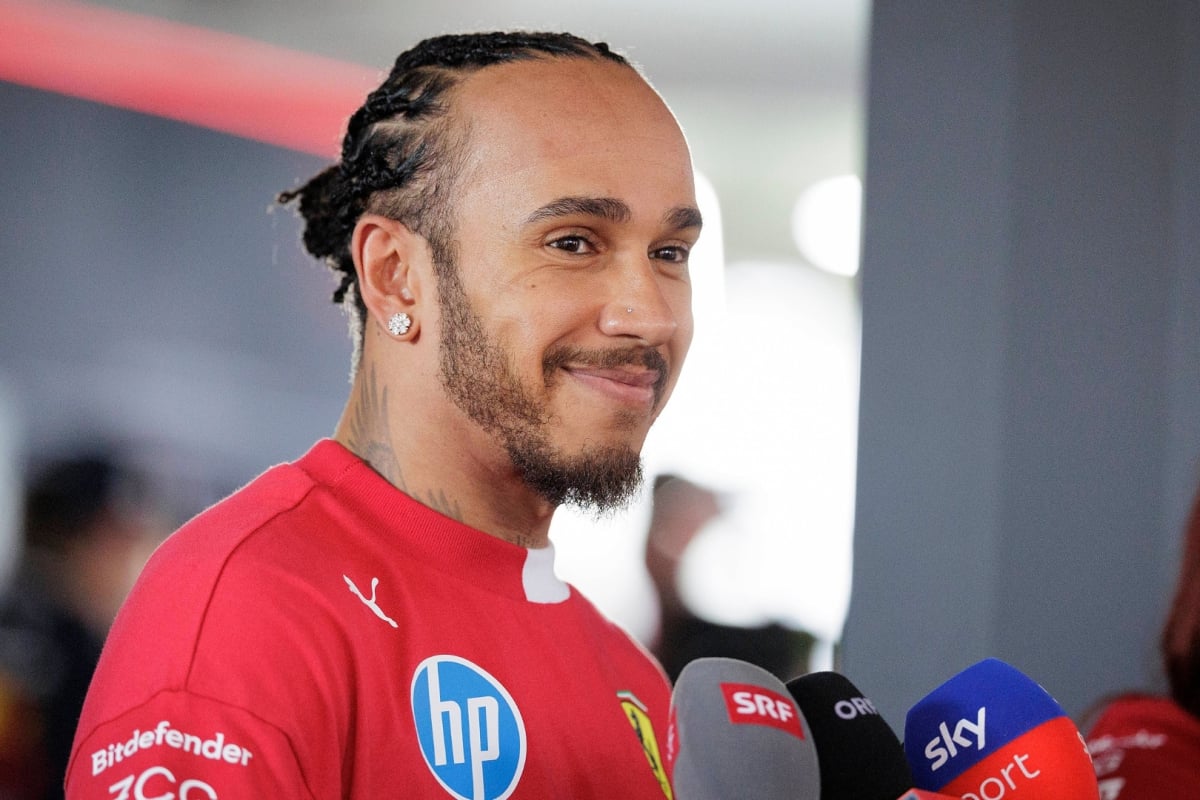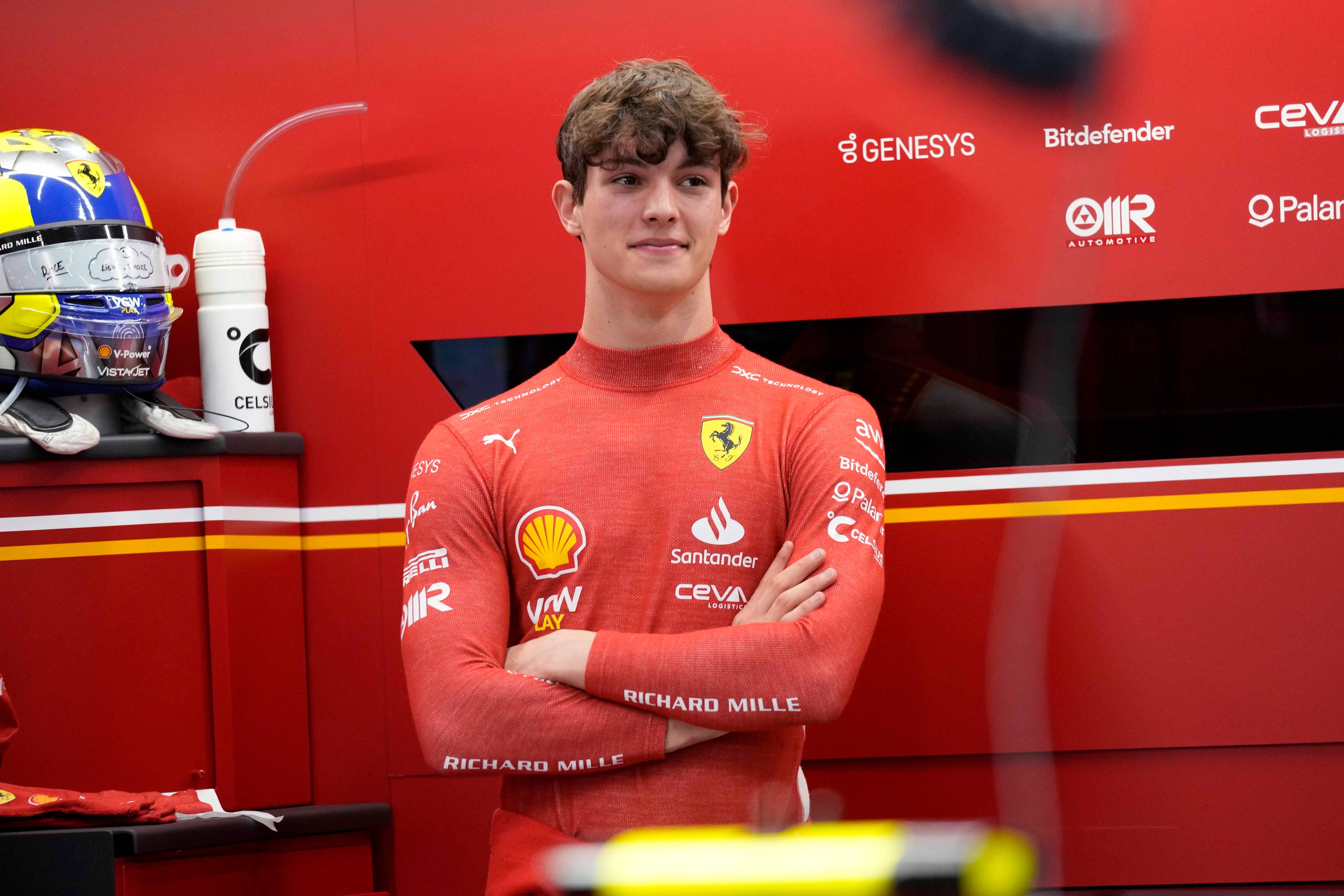The world of Formula 1 is a relentless theatre of speed, strategy, and high-stakes drama. For months, the paddock has been electrified by a single, seismic event: Lewis Hamilton’s monumental decision to leave Mercedes and don the iconic scarlet of Ferrari.
It was a move that didn’t just change the allegiance of a seven-time world champion; it triggered a cascading tidal wave of consequences that has reshaped the entire grid, creating vacuums and opportunities in its wake.
And as the dust began to settle, a new star, forged in the crucible of this chaos, emerged into the spotlight. His name is Gabriel Bortoleto, and his journey to the pinnacle of motorsport is a captivating tale of talent, timing, and the unseen hand of a racing legend.

At just 20 years old, the São Paulo native is not merely another rookie; he is a back-to-back champion, a driver who has conquered both Formula 3 and Formula 2 in successive, dominant rookie seasons. This is a feat that places him in an elite category of racers, signaling a prodigious talent rarely seen. His rise has been nothing short of meteoric, marked by a potent combination of raw pace, remarkable consistency, and a racing intelligence that belies his years. Yet, his path to an F1 seat was anything but straightforward, intricately woven into the very fabric of the Hamilton-induced market frenzy.
For a time, Bortoleto was a jewel in the crown of the McLaren Driver Development Programme. The Woking-based team, with its formidable lineup of Lando Norris and Oscar Piastri locked into long-term contracts, saw in Bortoleto a future prospect, a talent to be nurtured and perhaps one day promoted. He was their rising star, the next in line. But in Formula 1, the future is a fluid concept, and timing is everything. Hamilton’s departure from Mercedes created a power vacuum that sent shockwaves down the pit lane. Suddenly, teams were scrambling, contracts were being scrutinized, and the driver market, affectionately known as the “silly season,” went into overdrive.
In this high-stakes game of musical chairs, staying put is often the riskiest move of all. While McLaren had a champion-in-waiting, they had no immediate seat to offer him. The stability of their current driver pairing, a strength in any other circumstance, became a gilded cage for the ambitious young Brazilian. It was a classic F1 paradox: a team with a surplus of talent and a driver whose soaring trajectory demanded an immediate launchpad.

This is where the story takes its most intriguing turn, introducing another Formula 1 icon into the narrative: Fernando Alonso. The two-time world champion is more than just a fierce competitor on the track; he is also a shrewd spotter and manager of talent. Through his A14 Management company, Alonso has taken a select group of young drivers under his wing, and Gabriel Bortoleto is his star protégé. It was Alonso who saw the storm brewing in the driver market and understood that waiting for a seat at McLaren could mean missing the opportunity of a lifetime.
While McLaren hesitated, constrained by their own success, the Sauber team—soon to be the mighty Audi works outfit in 2026—saw their chance. They were in the midst of a complete overhaul, seeking a blend of experience and youthful dynamism to lead their new era. With veteran Nico Hülkenberg already signed, they needed a young, hungry driver with a champion’s pedigree. Bortoleto fit the bill perfectly. He was a champion, available, and backed by one of the most respected figures in the sport. The deal was swift and decisive. McLaren, despite their investment in his development, could not stand in his way, graciously releasing him to seize his F1 dream.
The move was a masterstroke of strategic maneuvering, a testament to the influence and foresight of Alonso. He had not only mentored Bortoleto on the track, honing his racecraft and guiding his career choices, but had now played a pivotal role in securing him a place on the F1 grid, ironically with a rival team. The relationship between the two is a fascinating dynamic—a blend of mentor-protégé, manager-client, and now, on-track rivals. Alonso, ever the competitor, has joked about Bortoleto being under instructions not to challenge him too hard, but beneath the humor lies a deep-seated belief in his young charge’s potential. He has been seen in deep conversation with Bortoleto in the paddock, sharing the invaluable wisdom accumulated over two decades at the sharp end of motorsport.

Bortoleto’s arrival carries with it the hopes of a nation. Brazil, a country with a rich and storied history in Formula 1, has been without a full-time driver since Felipe Massa’s departure in 2017. The ghosts of legends like Ayrton Senna and Nelson Piquet loom large, creating an immense weight of expectation. But Bortoleto carries it with a quiet confidence. His back-to-back titles in the junior formulas were not just wins; they were statements. In F3, he dominated with a maturity that left his rivals trailing. In F2, he delivered a season of stunning consistency and audacious overtakes, including a now-legendary charge from last to first at Monza that had the entire paddock talking.
This performance was a microcosm of his talent: calm under pressure, strategically brilliant, and possessing a ruthless overtaking instinct. It was the kind of drive that separates the good from the great, the kind that convinced Sauber and the incoming Audi hierarchy that they had found their man. Mattia Binotto, the man leading Sauber’s transition, confirmed that it was Bortoleto’s on-track achievements, not just Alonso’s backing, that secured him the drive.
And so, the stage is set for an electrifying 2025 season. Lewis Hamilton, in his quest for an unprecedented eighth world title, will begin his Ferrari chapter, a storyline so compelling it could be a Hollywood script. Meanwhile, Gabriel Bortoleto will make his debut, a rookie born from the very chaos Hamilton’s move created. He enters a team on the cusp of a major transformation, a team with the backing of a manufacturing giant and ambitions of championship glory.
The “Hamilton Effect” has, in essence, created its own counter-narrative. While the legend charts the final, glorious course of his career, a new generation, led by the likes of Bortoleto, is stepping onto the stage, ready to claim the spotlight. His journey from McLaren hopeful to Sauber’s new star is a powerful reminder that in the cutthroat world of Formula 1, talent is only part of the equation. Vision, strategy, and the guidance of a champion-mentor can be the keys that unlock the door to greatness. The Brazilian flag will fly proudly on the grid once more, carried by a young man whose destiny was irrevocably altered by a superstar’s bold gamble for glory. The new era has begun.